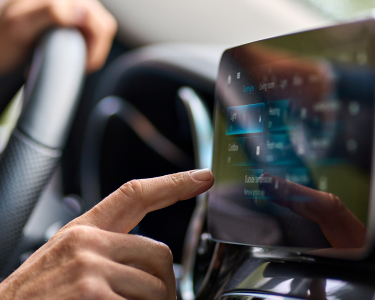The Future of Retail: Conscious and Cognitive Ecosystems

The last decade witnessed the emergence of evolving technologies, social media interactions, and the app-native, digitally conscious, connected consumer. The closure of physical stores during the COVID-19 pandemic forced the diversity of consumers to set aside their deep-seated concerns on online shopping habits and payment behaviors. Retail websites witnessed a surge in the number of global visits, a trend more pronounced in emerging economies, which had higher COVID impact and lower e-commerce penetration earlier.
Some of these changes in consumer shopping habits and payment behavior will be longer-lasting, as consumers expect to shop online more frequently even after the pandemic. These imperatives of the digital economy are ushering in a structural change and shift in the retail paradigm, one that can sustain the possibility of any disruptive agent of change. Differentiated and personalized buying preferences will dictate retailers’ transformation objectives and in turn, ensure business success.
The Evolution Under a Microscope
A growing number of sales channels, buy buttons, and proliferating products and variants have fragmented the market, further magnifying the challenges of price optimization and promotion offer creation to match the divergent consumer preferences. Meanwhile, consumer demand for shorter fulfillment cycles is increasing the existing complexities of omni-channel supply chain networks and inventories, resulting in higher working capital requirements. The volume of customer queries through voice, video, digital, and social channels is rising. Beyond convenience and personalized journeys, quick and effective customer support has evolved into a critical influencer for customer loyalty.
Reading the Digital-Native Customer
Enabling retailers to cater to customer expectation begins with understanding the customers. This can be achieved by leveraging cognitive technologies like computer vision and embedded technologies such as natural language processing (NLP), artificial intelligence (AI), and machine learning (ML).
Understand
AI-driven data mining accesses large volumes of complex, user-generated data to segment customers, generate data insights and derive customer value analysis. This helps establish data relationships, thereby enabling consumer behavior analysis, that identifies myriad nuances – from customer’s propensity to buy, promotion affinity, channels preference, and purchase frequency for predicting future customer purchases.
Act
AI and analytics enable retailers to create personalized and precision marketing through profiling and segmentation, targeting the right profiles, offering optimum promotions, communicated through preferred channels during the predicted purchase period. Demand prediction is enabling more accurate door-level granular forecasts, helping retailers maintain the right assortment and optimum inventory levels at the right locations. It enables quicker delivery of the right products to the customers. This elevated customer experience is helping clock higher net promoter scores (NPS) and better consumer loyalty. What’s more, these AI-backed security solutions can help ensure safer transactions, allaying threats of customer data breaches.
Enrich
AI-powered interactive chatbots, virtual assistants along with AI-enabled analytics are transforming customer care centers into customer value hubs. Chatbots can guide and assist agents to orchestrate more meaningful, convenient, and personalized engagements at each touchpoint in the customer purchase journey. Consultative engagements with personalized brand advisory, product recommendations, and next-best action can elevate customer experience and brand advocacy, enabling higher revenue growth.
Cognitive Technologies Revamping In-store Experiences
AI and advanced data analytics offer a practical roadmap to optimize, predict, and provide reasonable prices to customers. Retailers can derive meaningful insights from price fluctuations and customize promotions to get a better handle on customer supply and demand. With ML, they can optimize inventories across the complex supply chain and reduce working capital requirements.
AR/VR
AR-enabled virtual product catalogues can help customers make quicker and informed purchase decisions. Apart from digital commerce, virtual product experience stores and kiosks are emerging as yet another new model, where companies can present larger product assortments through order-at-store and deliver-at-home capabilities.
Robotics and IoT
Smart shelves and digital racks enable the quick identification of out-of-stock items and pricing errors. With inventory robots, the store staff can be alerted for low stock or misplaced items, thereby accounting for more up-to-date inventories. AI-enabled digital assistants with in-app functionalities can also be programmed to guide customers with store navigation and purchase support. Here, ML can be used to customize promotions in real time. When it comes to marketing, AI-powered marketing automation can also deliver location-based personalized offers and product recommendations.
Computer Vision
Retailers that are adopting computer vision-enabled auto-checkouts are creating boundless POS, saving long customer queues, and elevating in-store customer experience. Further, computer vision facilitates the tracking of in-store customer movement, which helps in aisle optimization, allowing better product or aisle space allocation. As the technology matures, computer vision can also be applied to mitigate product loss and shrinkage in real time. When integrated with transaction data, vision analytics can provide insights into sales performance as well.
Doing Intelligent Retail the Right Way
Digital disruption is undoubtedly changing the retail operating model – both online and at brick-and-mortar stores. Trends like livestream shopping, social commerce, buy-online pick-up in store (BOPIS), AR/VR-enabled kiosks, unmanned outlets, and environment consciousness are gradually capturing the attention of customers, today. That said, strategic adoption of cognitive technologies can empower retailers in accelerating customer acquisition and reducing customer churn. Most importantly, if applied right, cognitive technologies can offer a better customer experience. At Tech Mahindra BPS, we believe in helping retailers adopt a strategic approach to gain the much-needed competitive edge that modern-day retailers need, to thrive and sustain.

Joydeep is a management graduate who brings with him 15 years of retail and FMCG industry practitioner’s experience, across FMCG trade marketing, sales and distribution, retail operations, marketing, merchandising, sourcing and category management functions. In addition, he has 11+ years of consulting, business transformation, technology solutions, presales & consultative sales experience at global retail, CPG and CG clients.
MoreJoydeep is a management graduate who brings with him 15 years of retail and FMCG industry practitioner’s experience, across FMCG trade marketing, sales and distribution, retail operations, marketing, merchandising, sourcing and category management functions. In addition, he has 11+ years of consulting, business transformation, technology solutions, presales & consultative sales experience at global retail, CPG and CG clients.
Please reach out to him at: JS00801248@TechMahindra.com.
Less







